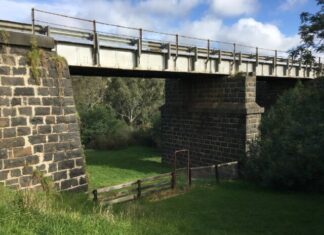By NOEL MURPHY
A $2 BILLION 200-turbine wind farm to power Geelong is on hold while Federal Government reviews its Renewable Energy Target (RET) scheme.
Hydro Tasmania said it would not invest in the giant King Island TasWind project, which would be the largest wind farm in the Southern Hemisphere, while the RET was in limbo.
“We continue to investigate the feasibility of wind farm projects in Tasmania, including the King Island project,” TasWind spokesperson Sam Meyer told the Independent.
“However, until there’s certainty about the future of the RET we’re not in a position to make significant financial commitments. Work on the TasWind feasibility study continues.”
The 600-megawatt wind farm would use the winds of the Roaring Forties to provide electricity directly to the Geelong region via undersea cables.
The project would provide enough power for up to 240,000 houses – more than three times the dwellings in Geelong and over five per cent of Australia’s existing RET.
A Hydro Tasmania submission to the review said the “boom-bust” nature of RET policy had been destructive to the industry.
The submission warned that international renewable energy companies and investors would probably react negatively to substantial RET changes and would be difficult to attract back to the sector.
“The RET has driven the growth of the renewable energy industry within Australia and has encouraged several major international energy companies to invest in the Australian energy market,” the submission stated.
“Hydro Tasmania has direct experience of this, including through our current partnership with Shenhua Clean Energy. Without the RET, renewable energy skills, expertise and employment would be lost.”
The project has sparked anxiety among conservationists over its potential impact on the orange-bellied parrot, which uses the island as a breeding ground. Earlier this year a No TasWind Farm Group argued the project would threaten the parrot.
One of the rare birds was sighted near Anglesea in May after its release in Tasmania late last year.
Dubbed ‘Blue L Silver’, the three-year-old captive-bred female’s arrival after a 580km journey up the west coast of Tasmania over King Island and across Bass Strait gave “fresh hope for the survival of the beleaguered species”, said Save the Orange-Bellied Parrot campaigner Debbie Lustig.
Orange-bellied parrots number 70 in the wild, with another 330 in a captive-breeding program.
The parrot became a political issue several times in the past when its presence conflicted with developments including a petrochemical complex proposed for Point Lillias and a $220 million wind farm at Bald Hills in Victoria south-east.







